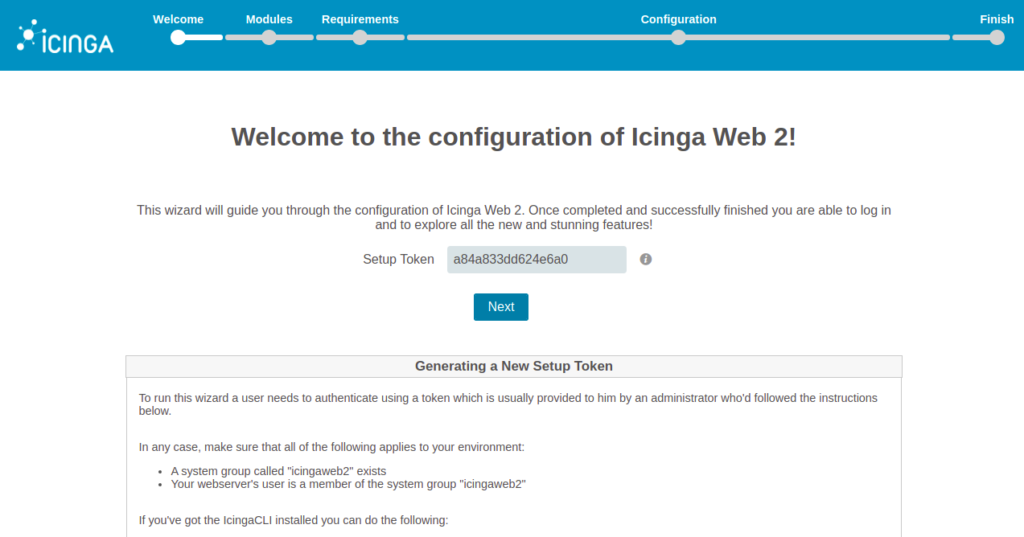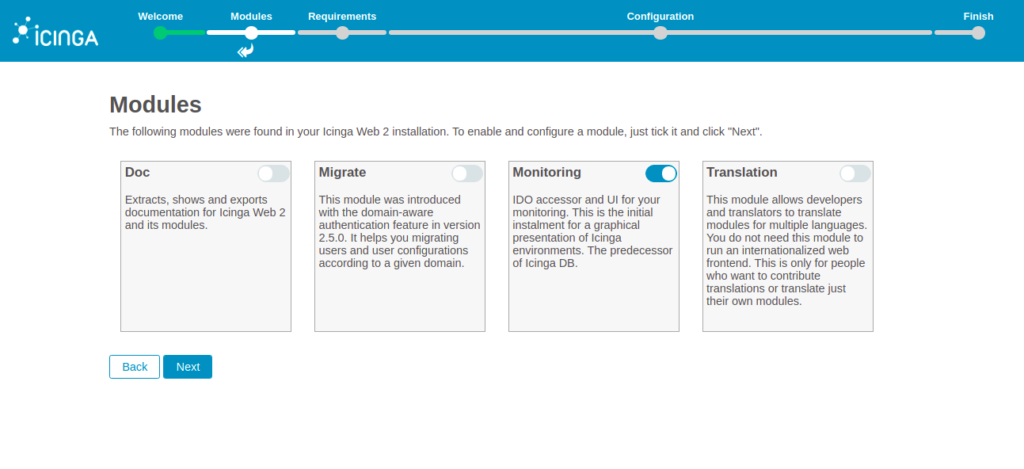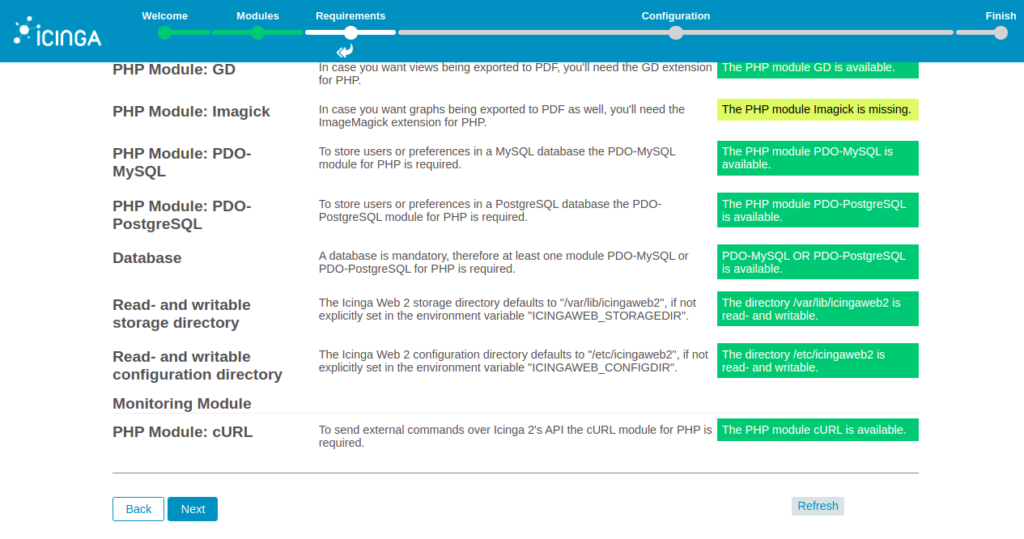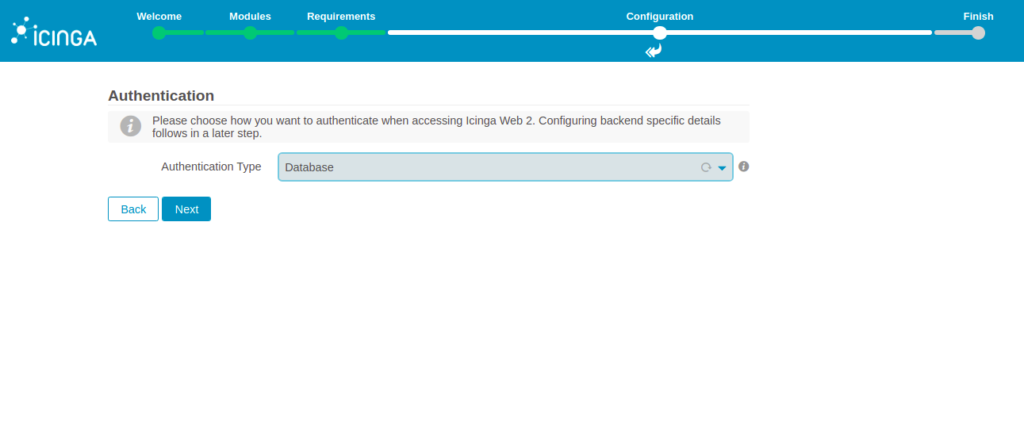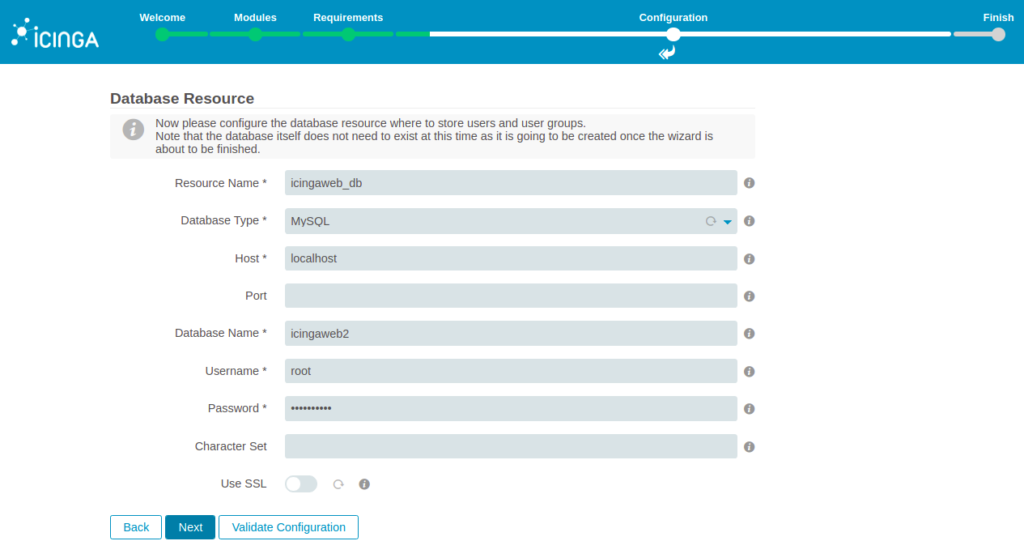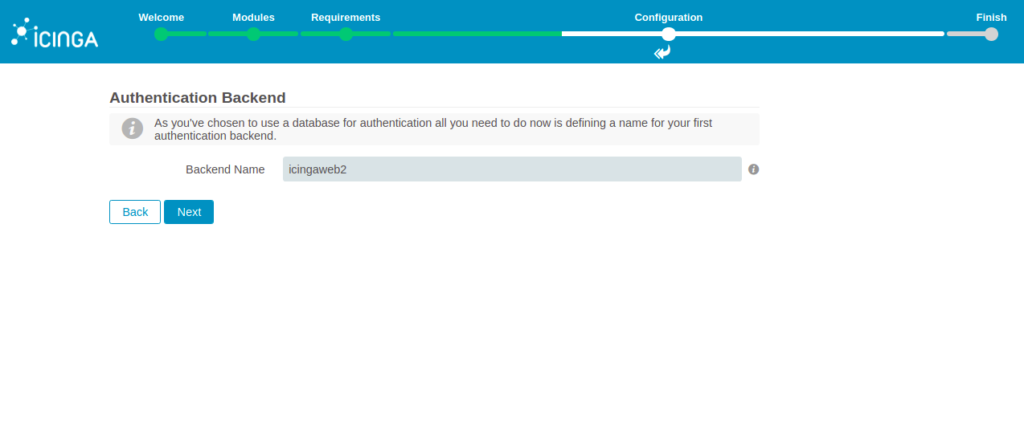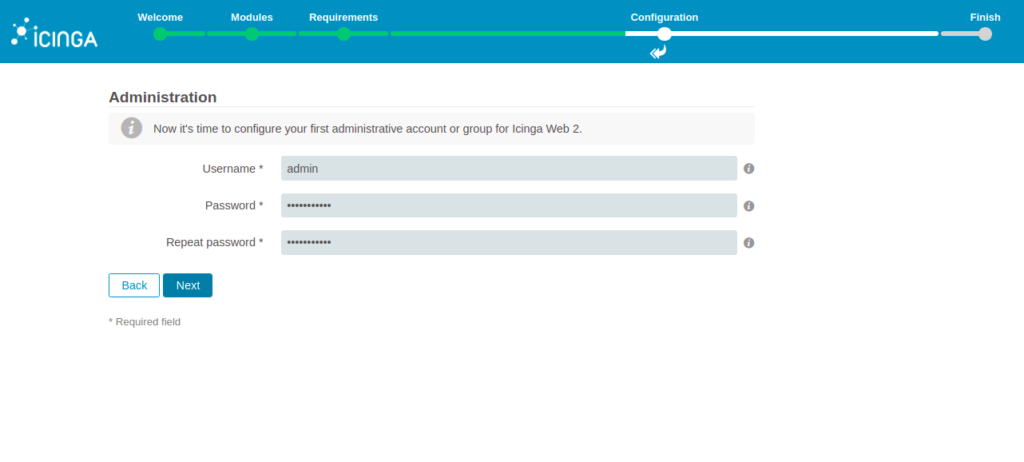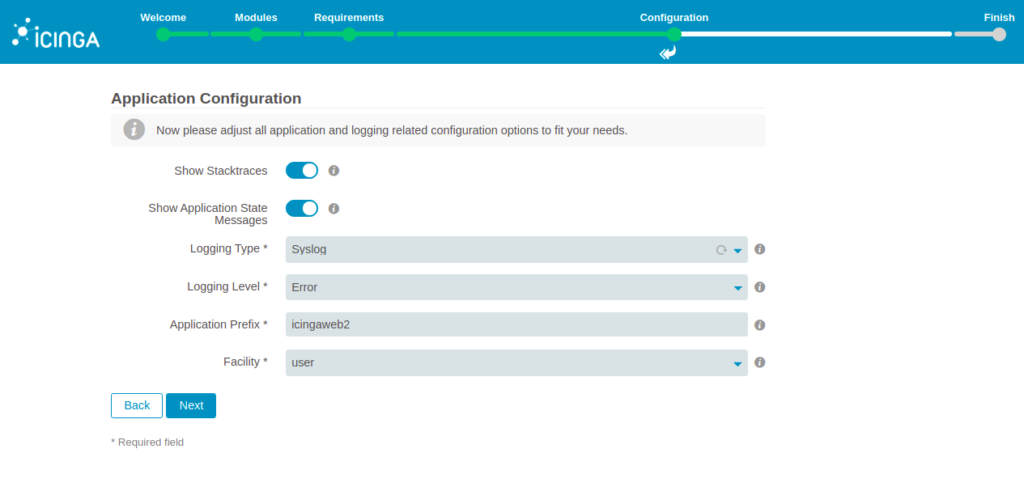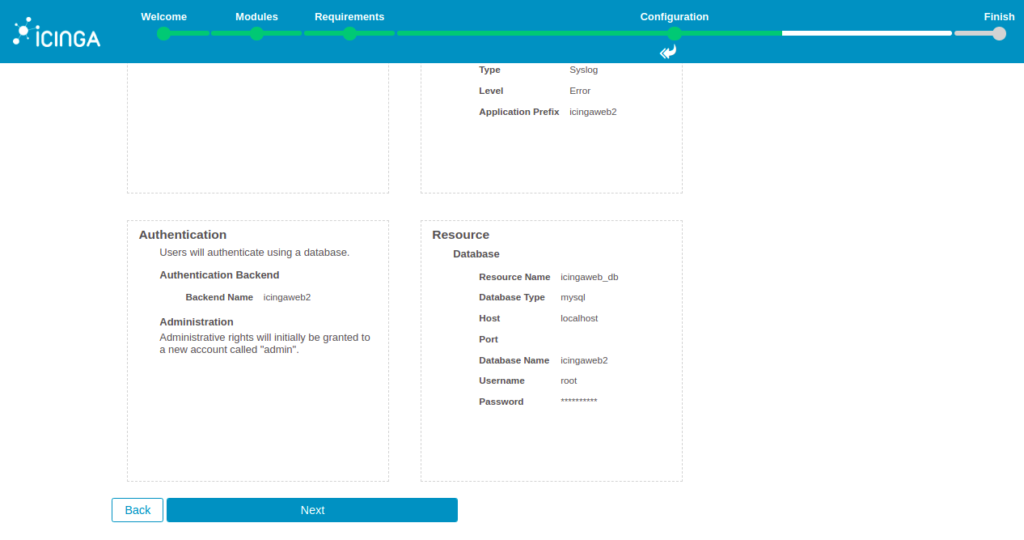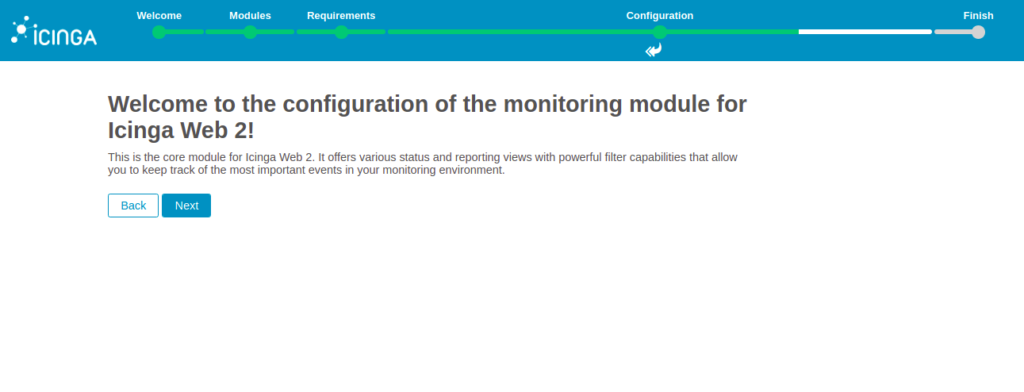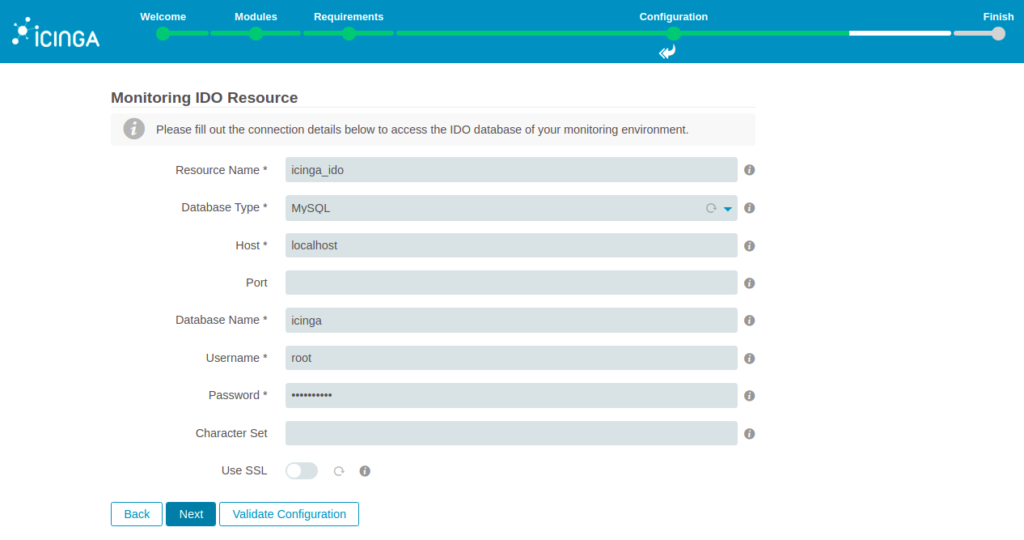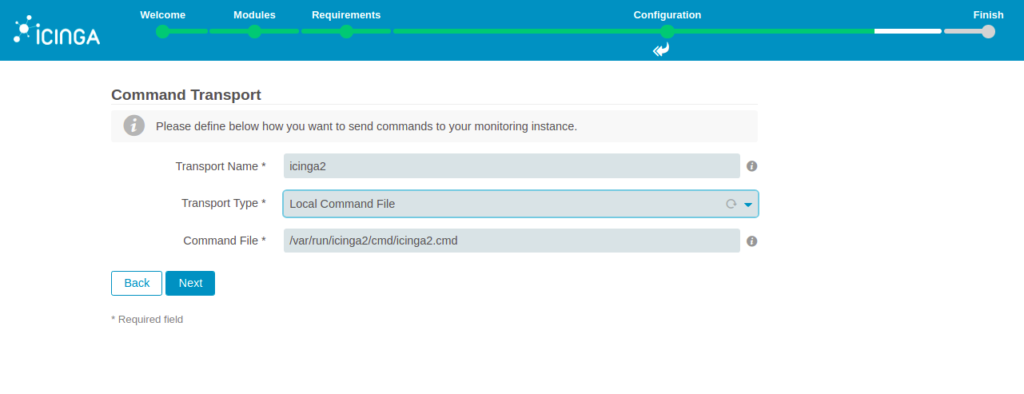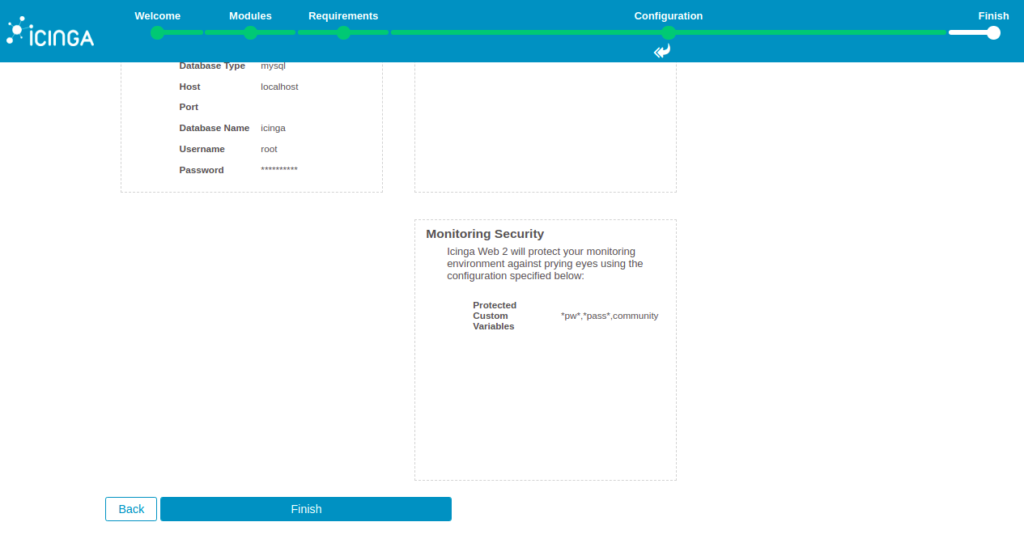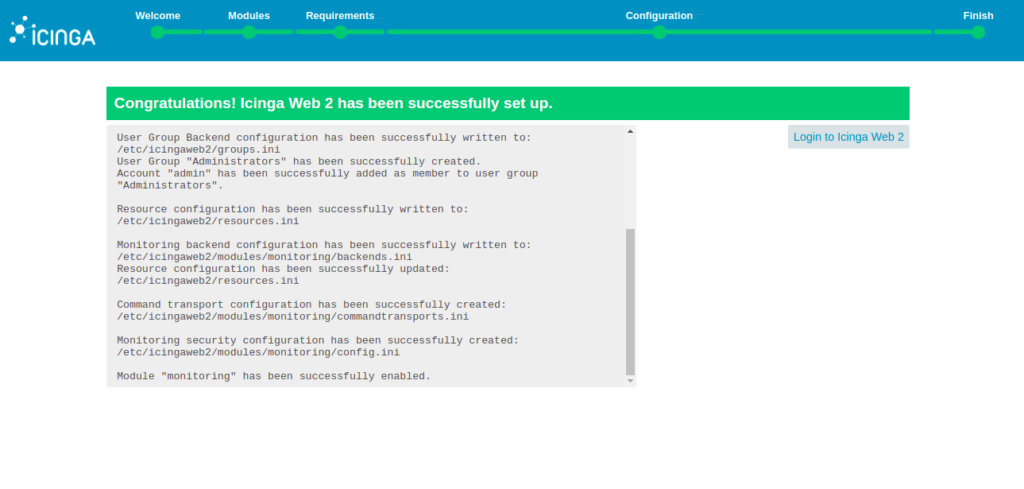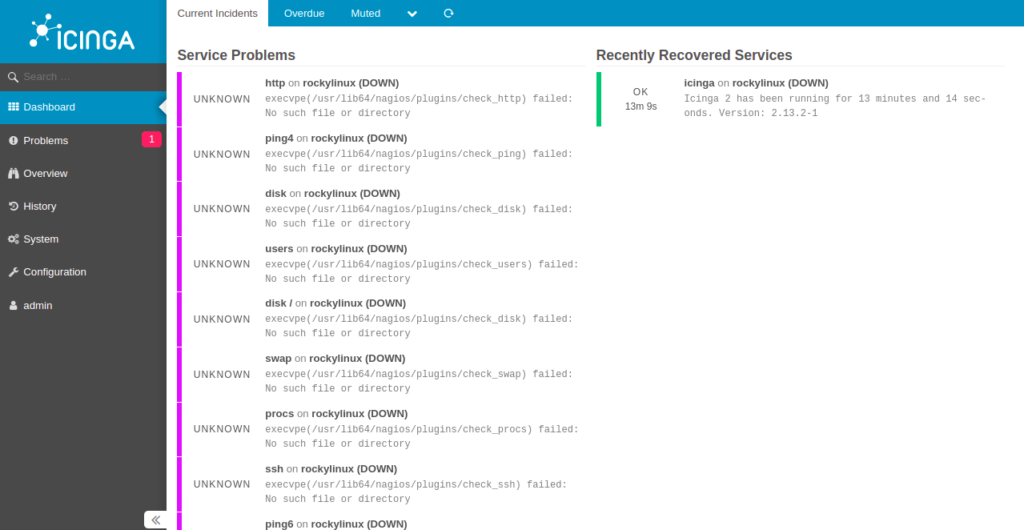Icinga is a free and open-source system and network monitoring application for Linux operating systems. It is scalable and extensible and can monitor large and complex environments across multiple locations. It checks for network resources like CPU, Memory, Uptime, Processes, Disk space, and other services like HTTP, SMTP, SSH, and more. It can be configured to notify users and generates performance data for reporting.
In this post, we will show you how to install Icinga 2 monitoring tool on Rocky Linux 8.
Step 1 – Add Icinga 2 Repository
By default, Icinga 2 is not included in the Rocky Linux 8 default repo, so you will need to add the Icinga 2 repository to your system.
First, install the EPEL repository using the following command:
dnf install https://dl.fedoraproject.org/pub/epel/epel-release-latest-8.noarch.rpm
Next, create an Icinga 2 repo with the following command:
nano /etc/yum.repos.d/icinga2.repo
Add the following lines:
[icinga2] name=Icinga 2 Repository for EPEL 8 baseurl=https://packages.icinga.com/epel/8/release enabled=1
Save and close the file, then import the Icinga 2 key:
rpm --import https://packages.icinga.com/icinga.key
Next, clean the package cache with the following command:
dnf clean all dnf makecache
Step 2 – Install and Configure MariaDB Database
Icinga 2 uses MariaDB as a database backend, so you will need to install the MariaDB server to your system. You can install it using the following command:
dnf install mariadb-server -y
Once MariaDB is installed, start and enable the MariaDB service using the following command:
systemctl start mariadb systemctl enable mariadb
Next, secure the MariaDB installation and set the root password with the following command:
mysql_secure_installation
Answer all the questions as shown below:
Enter current password for root (enter for none): OK, successfully used password, moving on... Set root password? [Y/n] Y New password: Re-enter new password: Remove anonymous users? [Y/n] Y Disallow root login remotely? [Y/n] Y Remove test database and access to it? [Y/n] Y Reload privilege tables now? [Y/n] Y
Next, log in to MariaDB with the following command:
mysql -u root -p
Once you are logged in, create a database and user for Icinga 2:
CREATE DATABASE icinga; GRANT ALL PRIVILEGES ON icinga.* TO 'icinga'@'localhost' IDENTIFIED BY 'password';
Next, flush the privileges and exit from MariaDB with the following command:
FLUSH PRIVILEGES; EXIT;
Step 3 – Install and Configure Icinga 2
Next, run the following command to install Icinga 2 and other required tools:
dnf install icinga2 icinga2-selinux icinga2-ido-mysql vim-icinga2 -y
Once Icinga 2 is installed, run the following command to enable the required features:
icinga2 feature enable command ido-mysql syslog
Next, import the Icinga 2 database schema to the Icinga database with the following command:
mysql -u root -p icinga < /usr/share/icinga2-ido-mysql/schema/mysql.sql
Next, edit the Icinga 2 MySQL configuration file:
nano /etc/icinga2/features-available/ido-mysql.conf
Define your database settings as shown below:
* The IdoMysqlConnection type implements MySQL support
* for DB IDO.
*/
object IdoMysqlConnection "ido-mysql" {
user = "icinga"
password = "password"
host = "localhost"
database = "icinga"
}
Save and close the file, then start and enable the Icinga 2 service:
systemctl start icinga2 systemctl enable icinga2
To check the Icinga 2 service, run the following command:
systemctl status icinga2
You will get the following output:
● icinga2.service - Icinga host/service/network monitoring system
Loaded: loaded (/usr/lib/systemd/system/icinga2.service; disabled; vendor preset: disabled)
Active: active (running) since Wed 2021-11-17 09:22:54 UTC; 4s ago
Process: 18616 ExecStartPre=/usr/lib/icinga2/prepare-dirs /etc/sysconfig/icinga2 (code=exited, status=0/SUCCESS)
Main PID: 18624 (icinga2)
Status: "Startup finished."
Tasks: 11 (limit: 11411)
Memory: 14.2M
CGroup: /system.slice/icinga2.service
├─18624 /usr/lib64/icinga2/sbin/icinga2 --no-stack-rlimit daemon --close-stdio -e /var/log/icinga2/error.log
├─18639 /usr/lib64/icinga2/sbin/icinga2 --no-stack-rlimit daemon --close-stdio -e /var/log/icinga2/error.log
└─18642 /usr/lib64/icinga2/sbin/icinga2 --no-stack-rlimit daemon --close-stdio -e /var/log/icinga2/error.log
Step 4 – Install Icinga Web 2
Icinga Web 2 is a web-based application used to manage Icinga 2 from a web-based interface. By default, it is not available in the Rocky Linux default repo, so you will need to enable the Powertools repo in your system.
Run the following command to enable the Powertools repo:
dnf install 'dnf-command(config-manager)' dnf config-manager --set-enabled powertools
Next, run the following command to install Icinga Web 2 with Apache and other packages:
dnf install httpd icingacli icingaweb2 php-json php-ldap
Once all the packages are installed, start and enable the Apache and PHP-FPM service:
systemctl enable --now httpd systemctl enable --now php-fpm.service
Step 5 – Access Icinga Web 2 Setup Wizard
Before starting, you will need to configure the Apache webserver for Icinga Web 2. You can configure it using the following command:
icingacli setup config webserver apache
Next, generate an authentication token with the following command:
icingacli setup token create
You will get the following output:
The newly generated setup token is: a84a833dd624e6a0
Now, open your web browser and access the Icinga Web 2 setup wizard using the URL http://your-server-ip/icingaweb2/setup. You should see the Icinga Web 2 welcome screen:
Provide your generated token and click on the Next button. You should see the following screen:
Select the module that you want to enable and click on the Next button. You should see the following screen:
Make sure all the PHP extensions are installed, then click on the Next button. You should see the following screen:
Select your authentication type and click on the Next button. You should see the following screen:
Provide your Icinga Web 2 database name, root username, password, and click on the Next button. You should see the following screen:
Provide your backend name and click on the Next button. You should see the following screen:
Provide your admin username and password and click on the Next button. You should see the following screen:
Provide your logging details and click on the Next button. You should see the following screen:
Verify all details and click on the Next button. You should see the following screen:
Click on the Next button. You should see the following screen:
Provide your Icinga 2 database name, root username, password, and click on the Next button. You should see the following screen:
Configure the command transport and click on the Next button. You should see the following screen:
Configure monitoring security and click on the Next button. You should see the following screen:
Verify all settings and click on the Finish button. You should see the following screen:
Click on the Login to Icinga Web 2 button. You should see the following screen:
Provide your admin username and password and click on the Login button. You should see the Icinga Web 2 dashboard on the following screen:
Conclusion
Congratulations! You have successfully installed Icinga 2 and Icinga Web 2 on Rocky Linux 8. You can now install Icinga 2 agents on the client system and start monitoring them from the Icinga Web 2 dashboard. Try it on your VPS from Atlantic.Net
